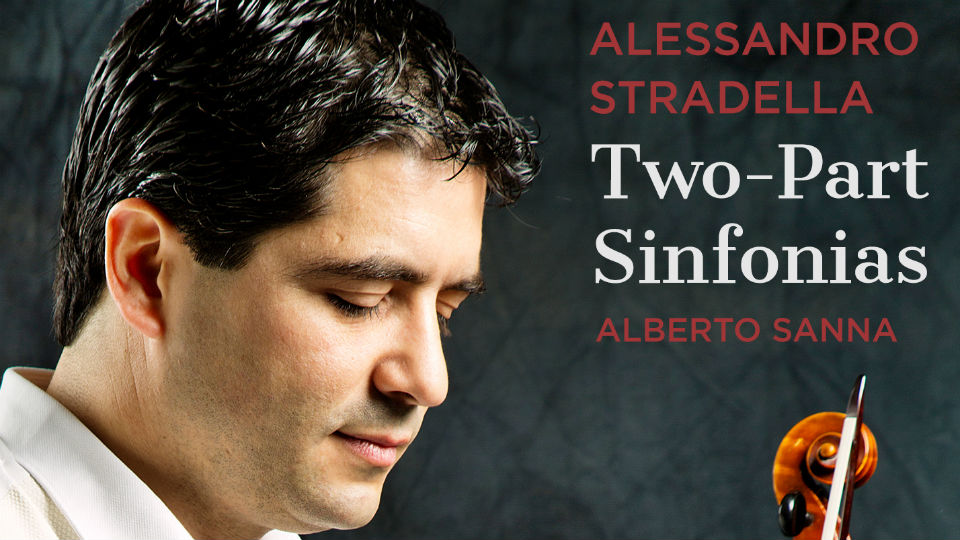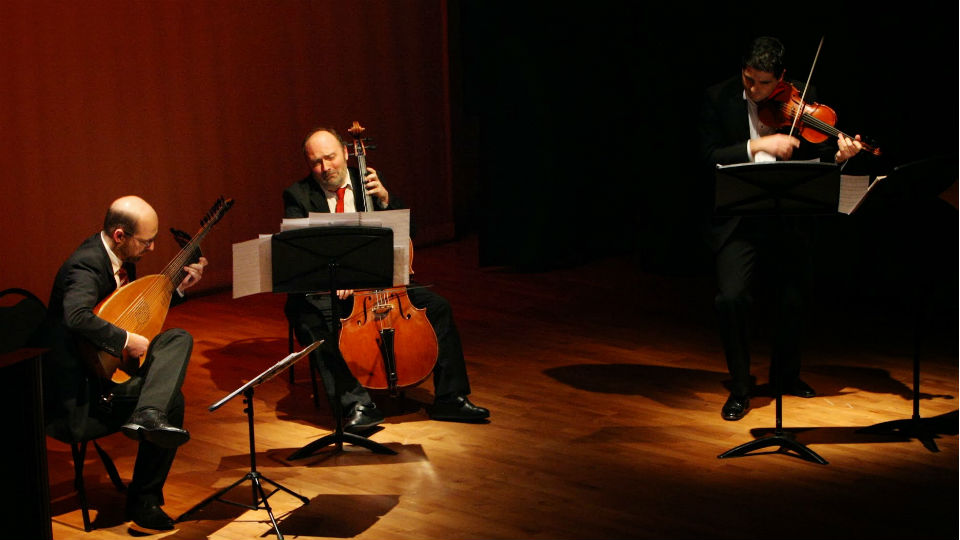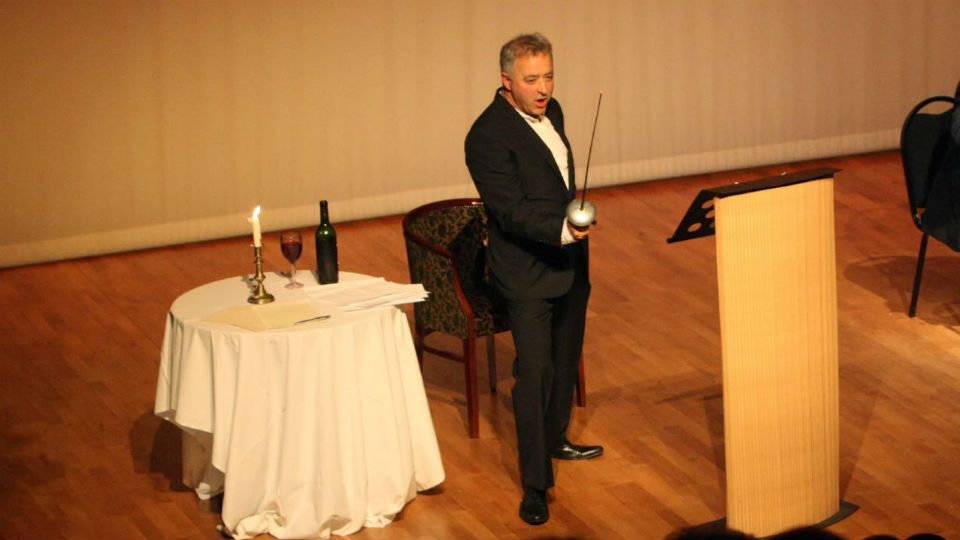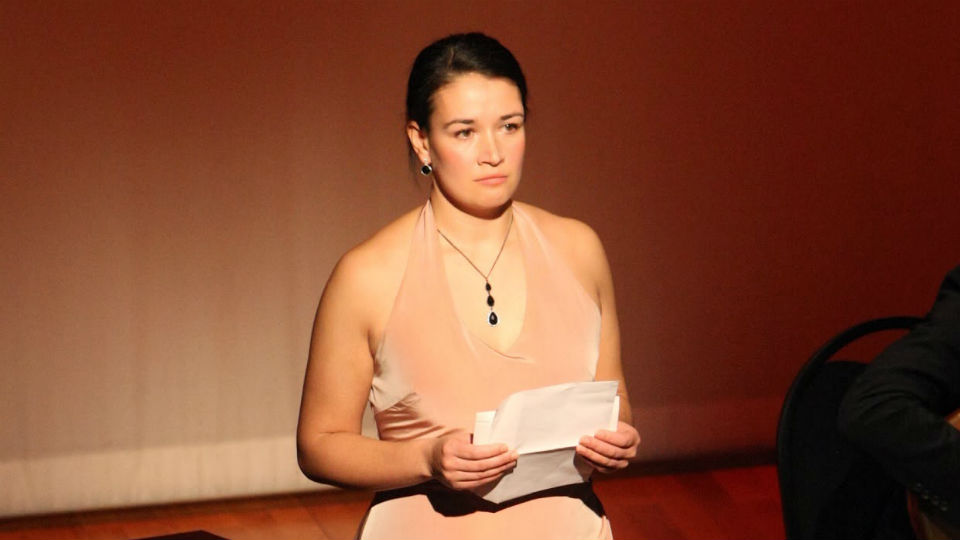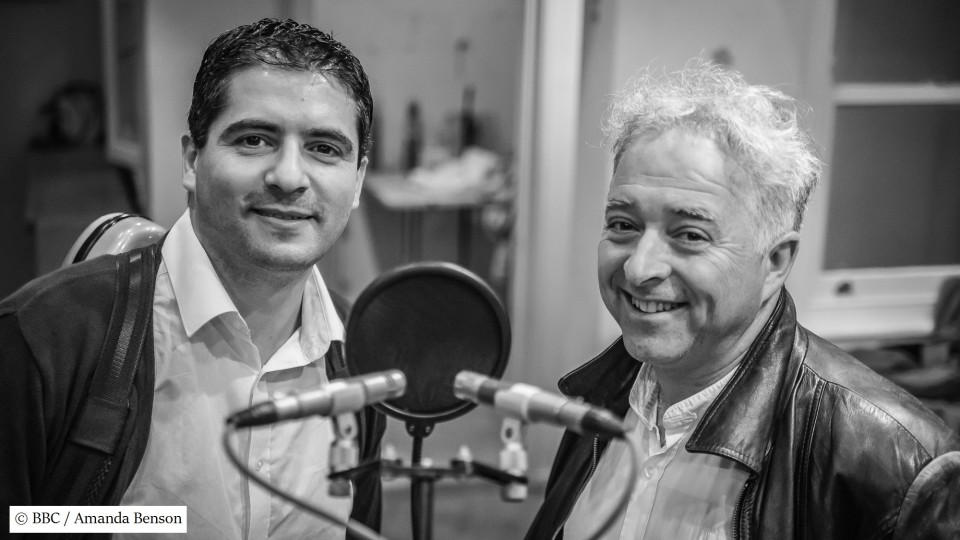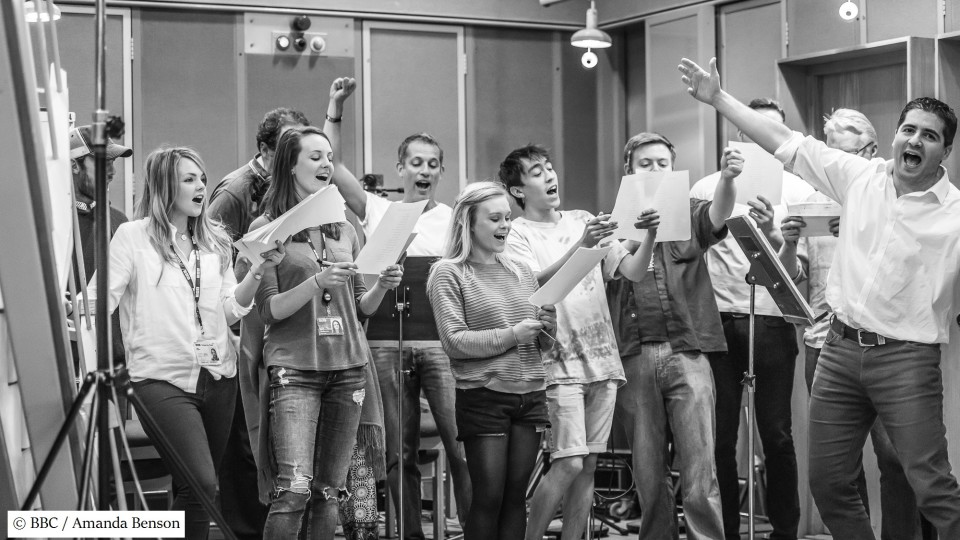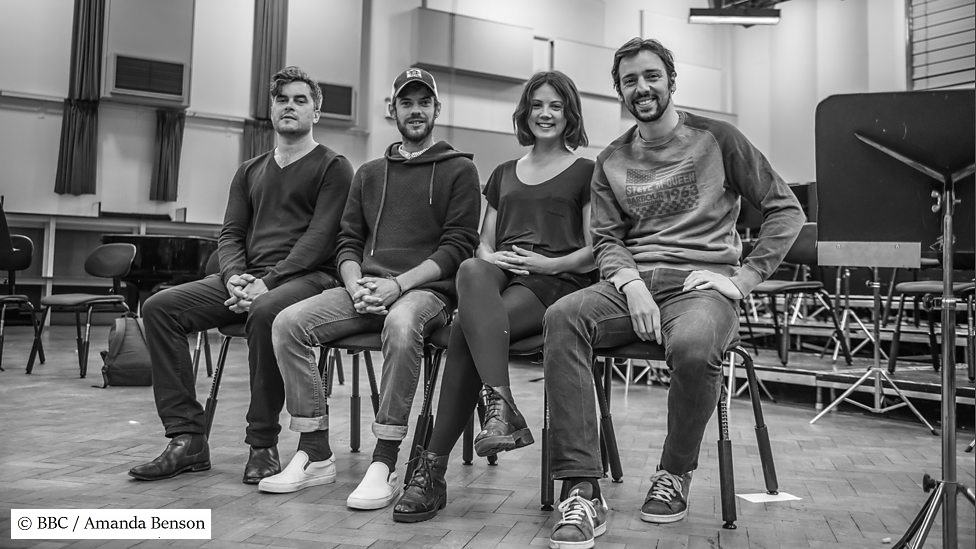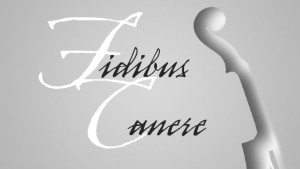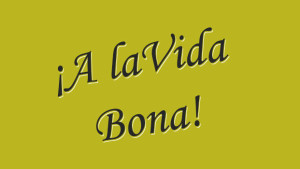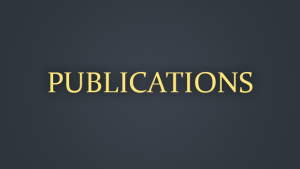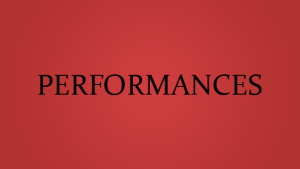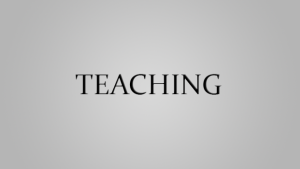Alessandro Stradella (1639-1682)
The Recording
Alessandro Stradella: Two-Part Sinfonias partially fills this gap in our knowledge of Stradella’s music and, by extension, of late seventeenth-century musical cultures. It is the first-ever period-instrument recording of Stradella’s complete sinfonias in two parts (a2) for a soprano (violin) and a bass instrument (violoncello or archlute). The sinfonias are part of a larger corpus of instrumental works composed over a number of years to serve a variety of purposes. Some pieces originated as instrumental preludes or interludes to vocal compositions – operas, oratorios, cantatas and motets; others were commissioned for private consumption by patrons from several Italian cities, both before and after Stradella left Rome. The catalogue of the extant instrumental music comprises twenty-seven works: a toccata for keyboard; a sinfonia in one part (a1) for a soprano instrument with thorough-bass accompaniment (S/bc); eleven sinfonias in two parts (a2) for a soprano and a bass instrument without thorough-bass accompaniment (SB); two sinfonias in two parts (a2) for a soprano and a bass instrument with thorough-bass accompaniment (SB/bc); nine sinfonias in three parts (a3) for two soprano and a bass instrument without thorough-bass accompaniment (SSB); a sinfonia in six parts (a6) without thorough-bass accompaniment (SSB+SSB); a sinfonia in seven parts (a7) without thorough-bass accompaniment (SSB+SATB); a sinfonia in nine parts (a9) with a trumpet and an optional thorough-bass accompaniment (S+SATB+SATB/[bc]). Some of the movements in the SB/bc sinfonias also dispense with the thorough-bass part.
According to a library list compiled in the late seventeenth century and now in the State Archive in Modena, Stradella also left the following collections: two sets of sinfonias in three (a3) and in five parts (a5); a set of sonatas for harpsichord and for organ; a set of toccatas for harpsichord. These collections have never been traced, however. Two of the nine sinfonias in three parts without thorough-bass accompaniment (SSB) appeared in slightly modified versions within anthologies printed in Bologna in the last decades of the seventeenth century: no. 2 in D major as the sixth piece in the volume Scielta delle suonate a due violini con il basso continuo per l’organo, ed. Marino Silvani (Bologna: Giacomo Monti, 1680); no. 1 in C major as the second piece in the volume Sonate a tre di vari autori ([Bologna]: n.p., c.1700). These works were the only Stradella sinfonias to have been published during the composer’s lifetime or shortly thereafter. Significantly, both were originally conceived as introductory sinfonias to vocal compositions: the sacred cantata Esule dalle sfere (Genoa, c.1680) and the oratorio La Susanna (Modena, 1681).
The main manuscript sources for the two-part sinfonias are currently preserved in Turin and in Modena. They are: ‘Sinfonie / A solo a2. a4. a6. et à 8 / Del Sig. Alessandro Stradella’ (Turin, Biblioteca Nazionale Universitaria, Foà 11), ‘Sinfonie / del Sig. Alessandro Stradella / a due, o a trè’ (Modena, Biblioteca Estense Universitaria, Mus. G. 210) and ‘Sinfonie del Stradella’ (Modena, Biblioteca Estense Universitaria, Mus. F. 1129). The commonest title for individual works encountered in these manuscripts is sinfonia (also spelled simfonia and sÿmphonia); though less frequent, the title sonata is also common. The practice is consistent with contemporary usage in central and northern Italy, where sinfonia was deemed the most generic name for multi-purpose instrumental compositions in few parts. The Roman theorist Angelo Berardi implied as much when he wrote in 1685: ‘Concertos of violins and other instruments are called sinfonias and today we hold in high esteem those of Arcangelo Corelli, true Orpheus of our times.’ However, throughout Stradella’s correspondence one comes across such expressions as ‘sonatas of violins’ (sonate di violini) and ‘grand concertos of violas’ (concerti grossi di viole). Judging from the context, the composer seems to have used both expressions in relation to specific genres of instrumental music: the former in reference to self-contained pieces in few parts, the latter to pieces for large ensembles. Occasionally, he also made use of the word sonata in opposition to the word song (canzone) – quite literally to refer to a piece to be played. By the same token, if in doubt copyists of Stradella’s instrumental compositions may have preferred the more generic sinfonia to the more specific terms sonata or concerto.
Although Marcello Scandelli (on the violoncello), Michele Pasotti (on the archlute) and I (on the violin) perform Stradella’s two-part sinfonias according to the practices of his own time rather than the conventions of later eras, with this 2-CD set I intend to question current understandings of instrumentation and sound ideal in the late seventeenth century. I aim to demonstrate that the concept of bass as ‘thorough bass’ (basso continuo) is ill-suited to make sense of contemporary notions of court music. The thorough bass was a practical means of either coordinating large forces in such repertoires as church polyphony for several choirs or of making the delivery of the text as clearly audible as possible in such representative genres as opera and oratorio. As a performance practice, the thorough bass met two particular needs: 1) it thickened the texture of church music, filling large halls with sound and facilitating ensemble music-making; 2) it provided harmonic support to the musical recitation of serious poetry in dramatic music, bridging the gaps between verses and affording continuity. There is a wealth of historical evidence to justify the use of keyboard instruments – organs in the church, harpsichords in the theatre – in such capacities. And yet it is abundantly clear that the bass part (basso) performing alongside melodic instruments such as the violin in court repertoires was often a ‘singing bass’ (basso cantante) rather than a thorough bass. It was, that is, a part lower in range and yet on an equal or nearly equal footing with the texturally more prominent soprano part (or parts). In their writings, music theorists of the time made the distinction between the singing and the thorough bass explicit. Sometime between 1677 and 1694, the Ferrarese musician Bartolomeo Bismantova explained: ‘Would one wish to write the thorough bass, one shall do it after having done the composition and form it from the bass voice’. His Bolognese colleague Lorenzo Penna was of the same opinion: ‘When one wishes to put in the compositions the thorough bass for the organ, or spinet, etc. this is done after having done the whole composition, forming it always from the lowest voice of that composition.’ The terms singing bass and thorough bass were used to refer to two musical entities, both low-ranged and sharing some musical material, and yet distinct enough conceptually and aurally to warrant names that distinguished them from one another. Their compositional relationship, moreover, was straightforward: the thorough bass was always derived from the singing bass not vice versa.
The ideal instrument for the over-exposed role of the singing bass was either the violoncello (violone, violoncino, violoncello) or the archlute (arciliuto), as specified in numerous publications stemming from northern and central Italy between the 1660s and the early 1700s, including Antonio Veracini’s op. 3 and Arcangelo Corelli’s opp. 1 and 3. Whilst by no means excluded from such a function on occasion, harpsichords, spinets and positive organs were on the whole considered not flexible enough to play singing basses; to the extent that some outstanding practitioners of the time – Bernardo Pasquini, Francesco Gasparini, Alessandro Scarlatti – felt obliged to provide sets of written instructions to accompany at the keyboard with the required taste. Keyboard instruments, long-necked lutes (chitarrone, tiorba, liuto attiorbato), five-course guitars and harps were rather more suited to playing thorough-bass accompaniments. In principle, these parts could be added to any instrumental or vocal piece, either in writing – as suggested by the music theorists quoted above – or on the spot – as Michele Pasotti does in the last movement of the seventh and in the whole of the ninth sinfonia.
Although a matter of some speculation, Stradella’s scoring and type of writing in the two-part sinfonias suggest the violin–cello or, alternatively, violin–lute pair as the ideal if not exclusive type of instrumentation. In the manuscript sources the soprano part of the sinfonias no. 1, 9 and 10 is actually scored for violin; and in the Turin source of the seven-part sinfonia the first instrumental choir (SSB) is expressly scored for two violins and a lute. After all, one of Stradella’s most famous colleagues in Rome was the lutenist Lelio Colista, who was also renowned for his sinfonias in three parts. Stradella’s own estate inventory listed as many as three lutes amongst his possessions. The music itself provides further internal evidence. Double-stop writing for example rarely poses any problem to the violinist or to the cellist.
In the second half of the seventeenth century, composers of instrumental ensemble music for the court from Rome, Bologna, Modena and Venice lost interest in the thorough bass as a performance practice and developed instead a taste for transparent polyphonic textures. Stradella’s oeuvre itself gives evidence for such a widespread practice, for the composer provided a thorough-bass part for only two out of his twenty-six sinfonias. In turn, these new textures enhanced the expressive potential of instrumental counterpoint as a compositional technique.
Alberto Sanna © 2016


